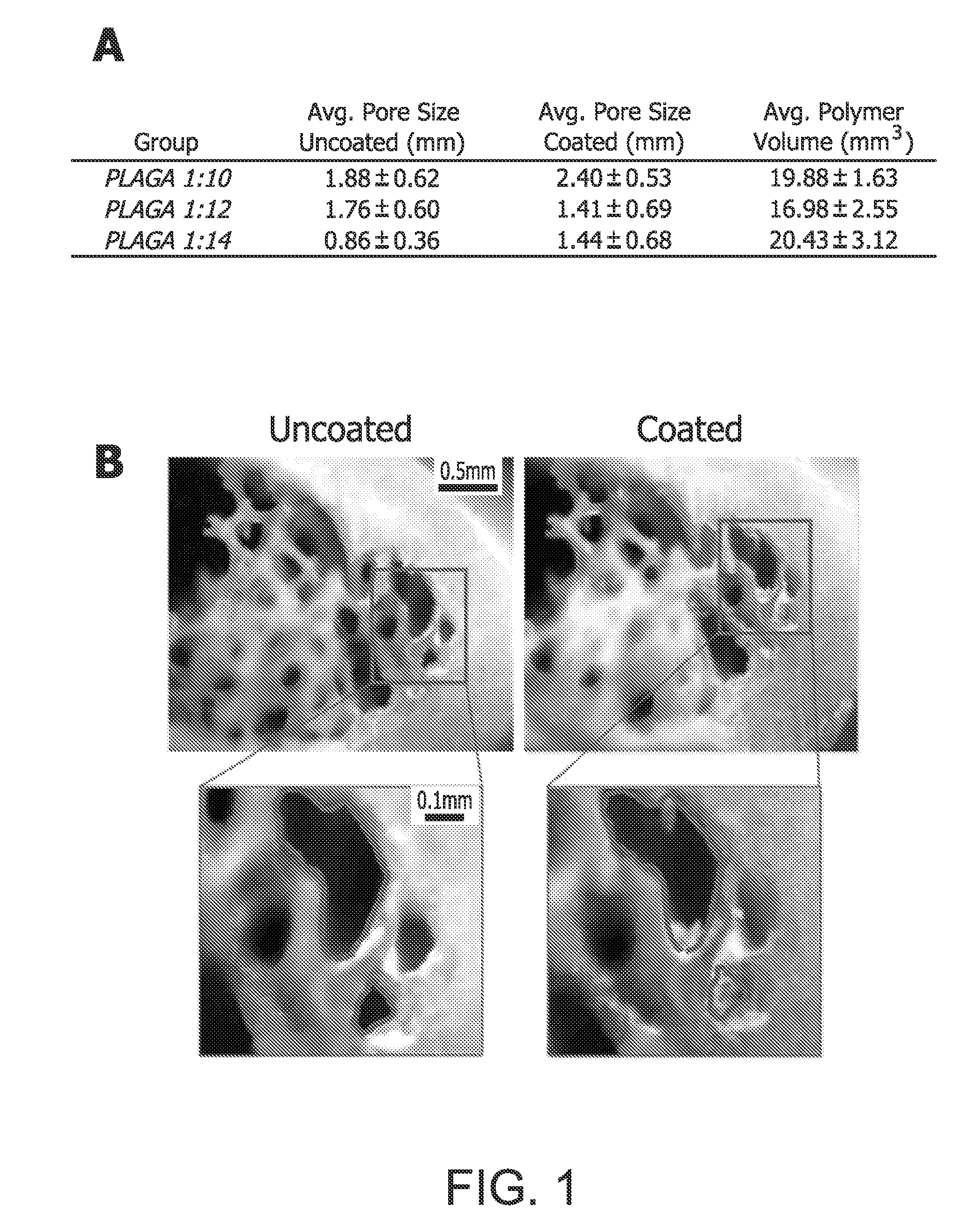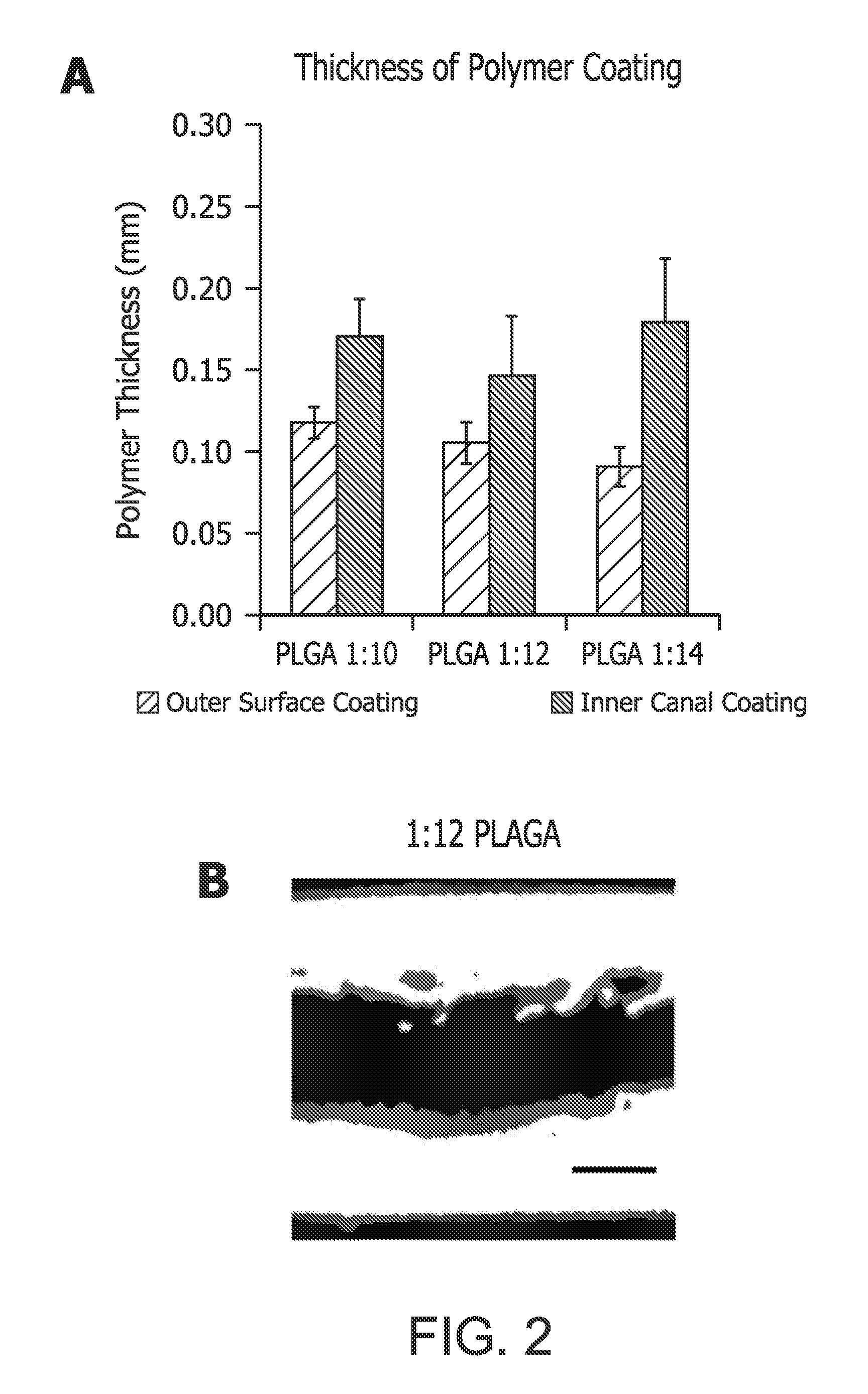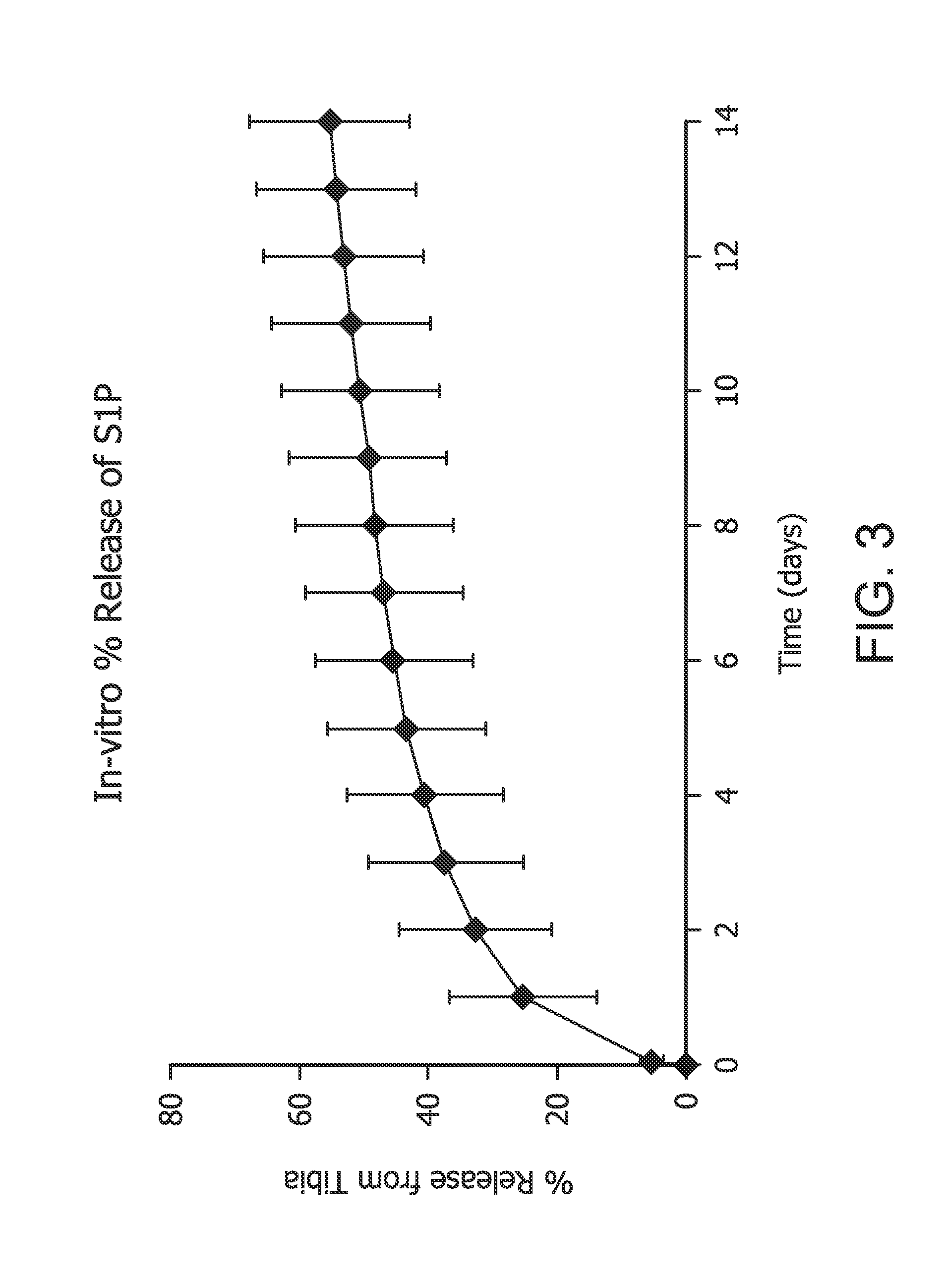Compositions and methods for bioactive coatings to improve allograft incorporation
a bioactive coating and allograft technology, applied in the direction of phosphorous compound active ingredients, drug compositions, prostheses, etc., can solve the problems of significant limitations in long-term functional capacity, poor host integration, and % of allograft implants that exhibit complications, etc., to improve allograft vascularization, mechanical integrity, and osseous remodeling
- Summary
- Abstract
- Description
- Claims
- Application Information
AI Technical Summary
Benefits of technology
Problems solved by technology
Method used
Image
Examples
embodiments
[0212]Existing wound healing formulations can also be used as pharmaceutically acceptable carriers for the procedures described herein.
[0213]Some examples of wounds, defects, diseases, and disorders that may be treated according to the methods of the invention are discussed herein. The invention should not be construed as being limited solely to these examples, as other wounds, defects, diseases, and disorders that are not described herein, or at present unknown, once known, may also be treatable using the methods of the invention.
[0214]The present invention provides for the use of bioactive polymer compositions for the compositions and methods of the invention, including, but not limited to, the polymers PLAGA and PHBV and bioactive molecules including, but not limited to FTY720 and S1P, and biologically active analogs and derivatives thereof. These polymers are biocompatible and biodegradable.
[0215]The present invention can also be practiced with other effective polymers, and one ...
example 1
[0354]The present invention, which encompasses a novel bioactive coating to improve allograft incorporation”, includes the bioactive coating itself and the final polymer-coated bone allograft. To that end, a sphingosine 1-phosphate (S1P) receptor-targeted drug is encapsulated in a biocompatible, biodegradable polymer coating on a bone allograft. This drug-delivering allograft is useful for optimizing and localizing drug release kinetics, thus enhancing the wound and bone healing processes and the viability of bone allografts. In one aspect, two S1P receptor-targeted drugs, S1P and Fingolimod (FTY720), possess significant angiogenic properties, and either one can be incorporated into the polymer coating to alter the bone healing process. Either poly(D,L-lactic-co-glycolic acid) (PLAGA) or poly(3-hydroxybutrate-co-3-hydroxyvalerate) (PHBV) can be used as the biocompatible, biodegradable polymer coating.
[0355]Materials and Methods
[0356]Polymer Coating Solution
[0357]Polymer coatings usi...
PUM
| Property | Measurement | Unit |
|---|---|---|
| Atomic weight | aaaaa | aaaaa |
| Atomic weight | aaaaa | aaaaa |
| Weight | aaaaa | aaaaa |
Abstract
Description
Claims
Application Information
 Login to View More
Login to View More - R&D
- Intellectual Property
- Life Sciences
- Materials
- Tech Scout
- Unparalleled Data Quality
- Higher Quality Content
- 60% Fewer Hallucinations
Browse by: Latest US Patents, China's latest patents, Technical Efficacy Thesaurus, Application Domain, Technology Topic, Popular Technical Reports.
© 2025 PatSnap. All rights reserved.Legal|Privacy policy|Modern Slavery Act Transparency Statement|Sitemap|About US| Contact US: help@patsnap.com



